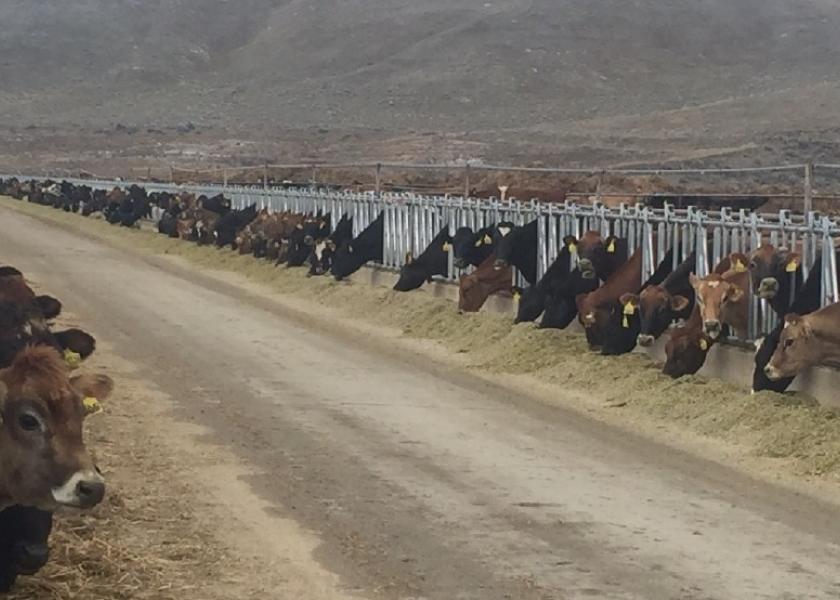The 2023 Zisk Report Illustrates Profitability for Dairy Producers

The Zisk 2023 report shows that dairy producers again expect a great year, surprisingly a little more profitable than 2022. That said not all producers will share in the success. Larger farms are projecting bigger profits than smaller ones. This continues a trend seen last year, which showed that farms with more than 1,000 cows will make a lot more money than those with less, but the 2023 report makes it even clearer that milking more than 5,000 cows is the most profitable. Farms with less than 250 cows will again struggle to break even, despite expectations of another good year for milk prices. On average the 3.6 million cows expect an average profit per cow to rise to $264.3 compared to $254.8 in 2022.
Zisk is a downloadable app that has been downloaded by more than 3,600 farm owners, representing 3.62 million cows, tallying to 30% of the U.S. herd. As such aggregating, the data from all those farms shows some fascinating insights, specifically because the report includes herd size, average basis, milk production, herd size in an overall trend report showing what to expect in 2023. The report is available for free online at ziskapp.com.
While dairy industry observers have been saying for some time that producers need to increase herd size, and the future economic model will be farms with more than 5,000 cows, the Zisk report last year suggested that 1,000 cows plus was enough. Larger farms are however more efficient, and this year’s survey contains almost twice as many large herds. This year’s data shows that bigger farms economies of scale will allow them to earn more per cow in 2023, specifically the herds that milk 5,000-plus cows.
The Southeast expects to be the most profitable region in the U.S. in 2023, with an average projected profit of $905 per cow. While smaller farms, those with less than 250 cows, expect to incur losses, the entire region’s overall increase in profit per cow is expected to grow by 69% in 2023 compared to the previous year. This contrasts with 2022, where the region as a whole was earning the least. Within the region South Carolina will be the state with the most profitable milk producers, however, Florida producers follow close behind.
The Southwest will be the second most profitable overall, 20% less than in the Southeast, but still touching $754 per cow. The Southwest figures are also in marked contrast to forecasts in the last Zisk report where it was the least profitable region. 2023 average profitability in the Southeast is projected at 50% above 2022, with California and Arizona expected to be the most profitable.
On the other-hand Northeast, expectations have changed dramatically from 12 months ago. Now projected to be the least profitable of the U.S. regions in 2023, still the average dairy farm is expecting a 20% increase in profits per cow over last year, in keeping with the nationwide trend. Massachusetts and New Jersey dairy farms are expecting to lose money in 2023, reflecting their small herd sizes. New York farms will be the most profitable in the region, and are extremely bullish about current trends, while Pennsylvania farms also expect to be profitable, a little better than that seen in 2022.
The Midwest projects a similar 2023 to 2022. South Dakota and Illinois are expected to be the most profitable of the states in the region. However, managing a small herd won’t be profitable, with farms with less than 250 cows expected to be less profitable in the coming year than they were in 2022, and more than 10 times less profitable than farms larger than 5,000 cows.
The Northwest regions expectations are similar to other regions, with the small farms making marginal profits, while the largest producers prosper. Washington state looks like it will be the most profitable, with an average herd size of 1,600 cows, while Colorado and Idaho are the next best despite average herd sizes being over 2,000. Compared to the year before it seems smaller farms in the Northwest face more commercial challenges than in 2022.
Despite some changes in regional dairy profitability rankings, and at the state level, all trends point in the same direction. Larger herds lead to larger profits on U.S. dairy farms, more so than ever. Producers leading this expansion are capitalizing on economies of scale. The Zisk reports average herd increased by 10% over the past year, even though more cows are included in this year’s report, and profits per cow are also expected to increase in 2023 by 32% across the country.
For more information and to look at the Zisk report, click on: ziskapp.com/the-zisk-report







